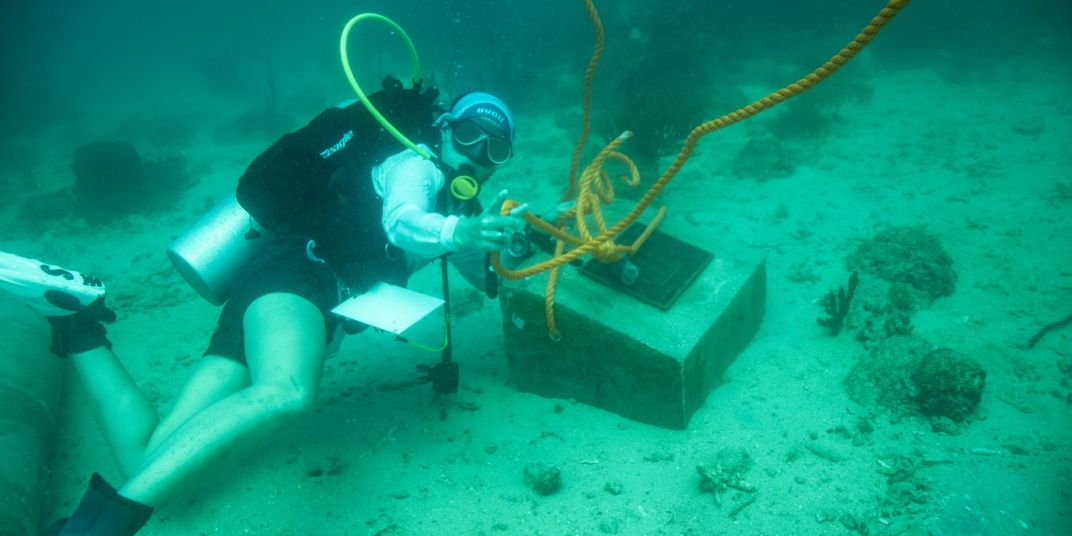New ‘Living Museum of the Sea’ Established in Dominican Republic Waters
Based around an existing shipwreck, the museum will allow divers to explore cannons, anchors and coral reefs
Researchers from Indiana University Bloomington have teamed up with the Dominican Republic’s government to create a “Living Museum of the Sea” within the waters of La Caleta Underwater National Park, a protected area along the island nation’s southern coast.
According to a press release, the museum aims to preserve archaeological and biological treasures in the underwater space. This particular project—the fifth of its kind—helps protect a Spanish merchant vessel that sank in the area during a storm in 1725. While marine archaeologists brought some artifacts to the surface, which are now housed at the Atarazanas Museum, the Nuestra Señora de Begoña itself, as well as an array of related items, have been left on the seafloor as part of an underwater, in situ exhibit.
The new venture isn’t the Dominican Republic’s first Living Museum of the Sea. Charles Beeker, director of IU’s Center for Underwater Science, has helped establish four others, including one at the site of the Quedagh Merchant wreck abandoned by pirate captain William Kidd, in the Caribbean nation’s waters over the past 15 years.
The museums solve a unique problem for the country. Hunting for old shipwrecks’ treasure is legal in the Dominican Republic as long as half the of the salvage is given to the government, but the nation lacks the resources and expertise needed to conserve or present these items.
“The thing with artifacts in maritime archaeology is that they’re underwater, and they’ve taken in chloride and salt ions from the saltwater,” IU’s Tori Galloway, a researcher who helped set up the museum, tells Isaac Schultz of Atlas Obscura. “When you pull them out of the water, they disintegrate much more quickly.”
To combat this issue, archaeologists involved with the initiative have returned anchors, cannons and other artifacts (along with some replica items) to the water, creating a mock shipwreck that divers and snorkelers can explore.
The Begoña wreck features two real cannons and two replicas.
“People will say to me, ‘Wait a minute, I’ve never seen archaeologists putting things back in the water,’” Beeker tells Schultz. “It’s a little different from the paradigm, but it’s certainly successful.”
The program began in 2004, when the team established the Guadalupe Underwater Archaeological Preserve at the site of the wrecks of two Spanish galleons, Guadalupe and Tolosa, that sank in Samana Bay during a 1724 hurricane. Not only does the site preserve the remains of these wrecks, but the researchers have also recorded coral colonies and new fish species moving into the museum.
Another collaborative effort, the Morales Underwater Archaeological Preserve at Guarango Reef, was established in 2011. It boasts a mock shipwreck equipped with cannons, bricks and olive jars from other historic wrecks.
The IU team plans on returning to the Begoña site in the near future to create 3-D photogrammetric renderings of the museum for long-term monitoring and management.
Beeker describes the project as a win-win for everyone involved. Archaeologists can preserve historic treasures that might otherwise be lost while raising awareness of maritime history; the public and the government, meanwhile, benefit from increased tourism.
“Treasure hunters can only sell it once, but with the living museum model, we can sell history forever,” says Beeker in the press release.
/https://tf-cmsv2-smithsonianmag-media.s3.amazonaws.com/filer/5c/6d/5c6d988b-8286-4433-a31f-28b2f39857fa/undersea_museum.jpg)
